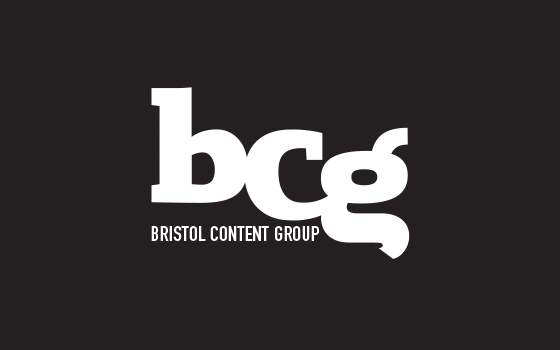As I mentioned in my previous blog post, when it comes to content, we content strategists spend most of our time focusing on recurring publishing platforms, like blogs, newsletters, and webinars. That’s all well and good, but in thinking and talking about a firm’s content strategy, we often unintentionally sidestep whole swaths of content that play an incredibly important role on every firm’s website. These are the pages — what we call key positioning pages — that describe your business in detail, including who you are, what you believe, what your niche is, and how you work. They may also talk about specific processes, services, products, and even pricing.
There are several reasons this content typically remains untouched by content strategists. One reason is that it’s usually more of a one-time project versus a recurring part of a business’s content strategy. What this means is that most firms lavish attention on their key positioning content at the outset of a site build and then let it sit relatively untouched after launch (that’s not necessarily a bad thing, by the way). Another reason is that key positioning pages are so closely tied to a firm’s branding that they often fall under the domain of brand strategists rather than content strategists. Finally, key positioning pages typically don’t offer the same possibilities in terms of engagement. Other than a “Contact Us” form, there tend not to be as many opportunities to take further action, as with a newsletter digest or webinar registration.
Despite all this, there’s plenty to say about how to approach the content on your key positioning pages from a content strategy perspective. Here are a few key takeaways.
1. What Do Your Positioning Pages Need to Communicate?
We’ve been thinking a lot recently about the agency homepage, what it should communicate, and how. Chris Butler recently wrote a piece (or two) on the subject, and he landed on four key questions your homepage should answer. They are:
- What do you do?
- What have you done?
- What do your clients say?
- What do you say?
The homepage is responsible for answering those questions in a fast and focused way, but the key positioning pages pick up where the homepage leaves off with the first three of those questions — that is, who you are, what you do, what it’s like to work with you, and examples of work you’ve done. In contrast with the homepage, however, the key positioning pages give you more space (both literally and figuratively) to answer those questions in greater detail. After all, the fact that a user has bothered to navigate to a page titled “About Us” or “Our Process” indicates they want to give you a little time and attention where those topics are concerned. So this is your chance to flesh it out.
2. Be Specific About the Services You Offer — and Maybe Even Their Price.
Many agencies begin and end with a simple list of services, thinking the services themselves self-explanatory. Think again. I’m not necessarily asking you to define common services that are well understood amongst your target demographic (though if the services are still fairly cutting edge or tech-oriented, it can’t hurt). But what I’m definitely asking you to do is tell me how your firm approaches the services you offer. Essentially, how does your approach to branding or content strategy or creative advertising differentiate you from your competitors? What sets you apart? Remember, this is the content that visitors peruse when they are most frankly considering hiring you; seize that opportunity by being equally frank (without being overly salesy).
3. Don’t Just Show — Tell!
When it comes to telling website visitors about their work, many agencies fall into the trap of showing with imagery rather than telling with words. It’s not that one medium is necessarily better than the other, and it’s definitely not an either-or proposition, but it is important to strike a healthy balance. If you’re letting images do most or all the talking, you’re leaving a lot unsaid — not to mention unindexed. The image-first approach tends to rear it’s head most viciously when it comes to case studies. For one thing, a lot of agencies’ work is visual, so it’s understandable that visual images would seem like the most powerful way to share that work with potential clients. For many harried agencies, images are also easier to pull together than a written case study. But, while showing visuals of your work is certainly compelling, you need to contextualize it with a lot more than just the name of the campaign and the client for whom it was created. (For more on current case study best practices, read this). The same goes for the other content in your key positioning pages: First tell, then show, and you’re on the right track.
4. Provide Supporting Evidence in the Form of Other Content.
Now that you’ve explained what you do and how you do it, reinforce your position by providing supporting evidence in the form of other, relevant content from around your site. This can be done either manually or with a little algorithmic assistance. For example, let’s say you decide to create a page for each service you offer (great idea!). Don’t just write a description of the service and leave it at that; instead, lead your visitors to other materials on your site that directly relate to that service. So, if you’ve got a page on branding, you’d include links to branding-focused case studies and thought-leadership articles. Related content links not only encourage deeper, longer browsing sessions, but they also subtly bolster everything you’ve said about a particular service offering by showing potential clients that you’ve got plenty of expertise and experience to back it up.
5. Create Contextual Opportunities for Engagement
Finally, make sure that each key positioning page comes with at least one opportunity to engage. Typically, the only call to action (CTA) that makes sense for these pages is a contact form to initiate further conversation. However, it’s possible to make even the same contact form feel contextually relevant by adjusting the language of the offer to reflect each page’s primary topic.
We’ve done this sort of thing recently with a few of our clients (like Franklin Street), where we give clients the ability to create multiple instances of a form-based CTA. So, on that branding services page we were talking about, the Contact CTA would use different language than the same form placed on a page about your video production services. (Even better, our CMS then attaches information about the source page with each Contact form submission, so our clients know which version of the form was used and can respond appropriately.) Whether or not your site is capable of that exact functionality, you need to offer visitors to key positioning pages the chance to move closer to the sale. After all, that’s what this content — arguably more than anything else on the site — is all about!

